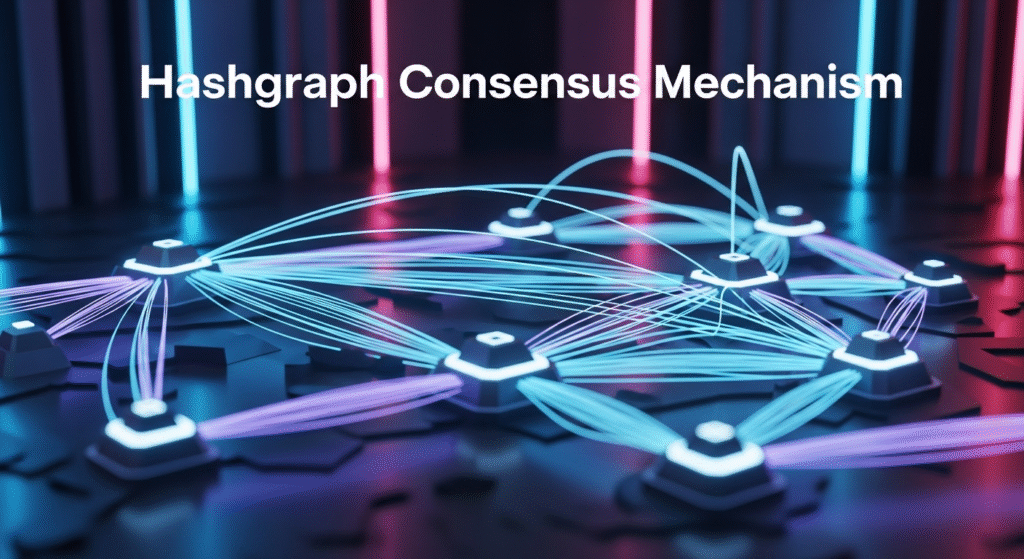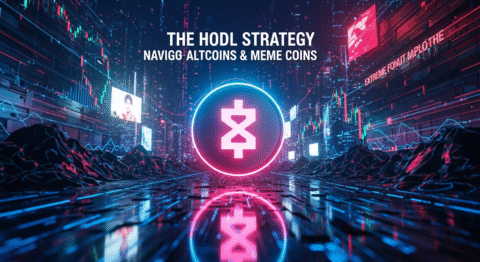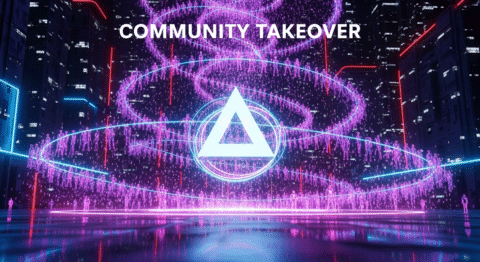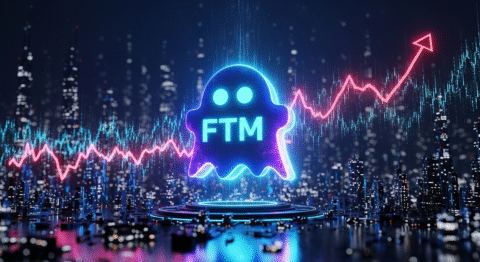Can you truly unlock consistent altcoin profits in today’s volatile crypto landscape? Many chase fleeting gains from meme coins or speculative airdrops, only to be left holding the bag. What if there were deeper, more sustainable strategies for navigating the altcoin market? For investors seeking robust growth and a glimpse into the future of decentralized technology, understanding projects like Hedera Hashgraph is paramount. This article dives into the seven secrets that differentiate Hedera Hashgraph from the noise, offering a data-driven roadmap to altcoin success.
Crypto Market Overview
The cryptocurrency market is a dynamic ecosystem, constantly abuzz with innovation and speculation. While Bitcoin and Ethereum often dominate headlines, the altcoin sector, an ever-expanding universe of digital assets beyond Bitcoin, is where many investors find significant growth opportunities – and equally significant risks. Currently, we’re observing a fascinating trend where utility-driven altcoins with strong technological foundations are starting to outperform the more speculative meme coins and short-lived airdrop hype. Volume in the altcoin market has seen significant upticks, correlating with broader market sentiment shifts and specific technological breakthroughs.
The Core Concept: How Hedera Hashgraph Actually Works

To truly grasp the potential of Hedera Hashgraph, we need to understand its foundational principles and how it differentiates itself from traditional blockchain technologies.
What Are Altcoins?
Altcoins, short for “alternative coins,” are any cryptocurrencies other than Bitcoin. They emerged as developers sought to improve upon Bitcoin’s perceived limitations or explore new use cases for blockchain technology. This vast category includes everything from established cryptocurrencies like Ethereum and Ripple to niche tokens focused on gaming, supply chain management, or decentralized autonomous organizations (DAOs). The diversity within altcoins is staggering, with each project aiming to solve a specific problem or offer a unique value proposition.
Meme coins, a sub-category of altcoins, are typically created as a joke or based on internet memes and social media trends. While some, like Dogecoin andShiba Inu, have achieved surprising market cap success due to viral marketing and strong community backing, they often lack inherent utility or a clear long-term development plan. Their value is largely driven by social sentiment and speculation.
Airdrops, on the other hand, are a marketing strategy where new tokens are distributed freely to existing holders of another cryptocurrency or to users who complete certain tasks (like social media engagement). They are often used to bootstrap a new project’s community and increase awareness. While airdrops can offer a chance for immediate gains, their value is highly speculative and often short-lived, with many airdropped tokens having minimal liquidity or utility.
Key Components & Technologies
Here’s where Hedera Hashgraph truly sets itself apart. Unlike most blockchains that rely on a linear chain of blocks, Hedera uses a hashgraph data structure. This is a distributed ledger technology (DLT) that achieves consensus through a process called gossip about gossip and virtual voting.
- Hashgraph Consensus: This unique algorithm allows the network to asymptotically achieve consensus on the order and timestamp of transactions without needing miners or validators to solve complex computational puzzles (like Proof-of-Work) or stake significant amounts of tokens (like Proof-of-Stake). This leads to significantly higher transaction throughput and lower energy consumption compared to many other DLTs.
- Asynchronous Byzantine Fault Tolerance (aBFT): Hedera claims to be the first public DLT to achieve aBFT. This is considered the highest form of security in distributed systems, meaning the network can reach consensus even if some nodes act maliciously, as long as a majority are honest. This robustness is critical for enterprise-grade applications.
- Directed Acyclic Graph (DAG): While not strictly a DAG in the same vein as some other projects, the hashgraph structure is fundamentally a DAG. This means transactions are linked in a non-linear, graph-like manner, allowing for parallel processing and greater efficiency.
- Smart Contracts (Hedera Smart Contract Service): Hedera Hashgraph supports smart contracts, allowing developers to build decentralized applications (dApps) on its network. This enables programmability and the creation of complex financial instruments, decentralized exchanges, and other innovative solutions.
- Token Service: Hedera has a native token service that allows for the creation and management of fungible and non-fungible tokens (NFTs) with built-in compliance features, making it attractive for regulated industries.
- Fast Payment Network (Hedera Consensus Service): This service enables developers to leverage the hashgraph consensus for high-throughput, low-fee payment settlements and other arbitrary message broadcasting needs.
This technological foundation is what allows Hedera Hashgraph to offer what it claims are industry-leading speeds, fairness, and security, making it a compelling platform for real-world enterprise adoption.
The Data-Driven Perspective
To understand the real potential of Hedera Hashgraph, we need to look beyond the hype and examine the data.
Market Data & Trends
Analyzing HBAR price alongside other altcoins provides crucial insights. While past performance is not indicative of future results, charting the HBAR price against key market movements reveals its responsiveness to broader crypto trends and its own network advancements. Data shows that Hedera Hashgraph consistently achieves high transaction per second (TPS) metrics when benchmarked against other leading DLTs. For instance, tests have demonstrated the network’s capacity to handle tens of thousands of TPS, far exceeding the capabilities of many traditional blockchains.
Furthermore, adoption rates are a critical indicator. Hedera Hashgraph has secured major partnerships and is being utilized by prominent corporations for various use cases, including supply chain tracking, digital identity, and payment processing. The growth in the number of active accounts and daily transactions on the Hedera Hashgraph network serves as tangible proof of its increasing utility. Projects building on Hedera Hashgraph, such as those in the DeFi space or for creating digital assets, contribute to its ecosystem’s growth and demand for HBAR, its native cryptocurrency.
Looking at the market for utility tokens, HBAR has shown resilience. While it experiences volatility common to all cryptocurrencies, its correlation with successful enterprise adoption and network upgrades is notable. The HBAR price often reacts positively to news of new Governing Council members joining or significant technological advancements being rolled out.
Tokenomics & Market Health
The tokenomics of HBAR are designed to support the network’s operation and incentivize participation. HBAR is the native cryptocurrency of the Hedera Hashgraph network and is used for paying transaction fees and securing the network.
- Total Supply and Distribution: Understanding the maximum supply of HBAR, its current circulating supply, and how it’s distributed is vital. Hedera Hashgraph had an initial distribution plan that included sales, grants, and treasury allocations. Transparency in these distributions is a positive sign.
- Utility and Demand: The demand for HBAR is intrinsically linked to the usage of the Hedera Hashgraph network. As more applications are built, more transactions occur, and more enterprise solutions are implemented, the need for HBAR to pay for these services increases. This creates a fundamental demand driver.
- Transaction Fees: Unlike many blockchains where fees can fluctuate wildly depending on network congestion, Hedera Hashgraph aims for predictable and low transaction fees. This predictability is crucial for businesses looking to build on the platform. The fees paid in HBAR contribute to the network’s sustainability.
- Staking and Governance: While Hedera Hashgraph doesn’t use Proof-of-Stake in the traditional sense, HBAR plays a role in the network’s governance and security. The Governing Council, comprising leading global organizations, makes key decisions regarding the network’s development and operation.
Analyzing these factors within the context of the HBAR price allows for a more informed investment decision. A growing network with increasing real-world utility and sound tokenomics suggests sustainable long-term value.
Risks, Challenges & Competition
Despite its promising technology, Hedera Hashgraph, like all cryptocurrencies, faces inherent risks and challenges.
Risks of Altcoins and Meme Coins
Investing in altcoins, meme coins, and even airdrops inherently carries significant risks:
- Volatility: Altcoins are notoriously volatile. Prices can surge dramatically but plummet just as quickly, often due to speculation, market sentiment, or lack of adoption.
- Regulatory Uncertainty: The regulatory landscape for cryptocurrencies is still evolving globally. Unfavorable regulations could impact the usability, legality, and valuation of altcoins.
- Security Vulnerabilities: Smart contract bugs, hacks, or exchange failures can lead to the loss of invested funds. Projects with weak security protocols are particularly vulnerable.
- Lack of Utility: Many altcoins, especially meme coins, are created without a clear use case or a sustainable economic model. Their value is purely speculative and can evaporate quickly.
- Market Manipulation: The relatively smaller market caps of many altcoins can make them susceptible to pump-and-dump schemes and other forms of manipulation.
- Technical Risks: Projects might fail to deliver on their roadmaps, suffer from scalability issues, or be outcompeted by superior technology.
For projects like Hedera Hashgraph, the risks are more nuanced, relating to adoption speed, competitive pressures, and continued innovation.
How Does Hedera Hashgraph Stack Up Against Competitors?
Hedera Hashgraph operates in a highly competitive DLT space. Its primary differentiation lies in its hashgraph consensus and aBFT security. Let’s compare it to some major players:
| Feature | Hedera Hashgraph (HBAR) | Ethereum (ETH) | Solana (SOL) | Cardano (ADA) |
|---|---|---|---|---|
| Consensus Mech. | Hashgraph (Governed by Council) | Proof-of-Stake (now) | Proof-of-Stake + Proof-of-History | Proof-of-Stake (Ouroboros) |
| Transaction Speed | Thousands of TPS (claimed up to 100,000+) | ~15-30 TPS (Layer 1) | Thousands of TPS | Hundreds of TPS |
| Transaction Fees | Very low & stable (e.g., $0.0001) | Variable & can be high during congestion (Layer 1) | Low and relatively stable | Low and relatively stable |
| Energy Efficiency | Extremely High (virtually no energy used for consensus) | High (post-Merge) | High | High |
| Security Model | aBFT (highest known level) | PoS (highly secure, widely tested) | PoS + PoH (innovative but newer) | PoS (academic rigor, high security) |
| Governing Body | Governing Council (Global Organizations) | Decentralized Community (Developers, Stakers, Users) | Decentralized Community | Decentralized Community |
| Smart Contracts | Yes (Solidity LLVM compiler support) | Yes (World-leading dApp ecosystem) | Yes (Rust, C++) | Yes (Plutus, Marlowe) |
| Key Strengths | Enterprise-grade, security, speed, fairness, governance | Decentralization, vast dApp ecosystem, developer community | High throughput, low fees, growing ecosystem | Research-driven, security, sustainability |
| Key Weaknesses | Perceived centralization due to Governing Council | Scalability issues, high fees on Layer 1 | History of network outages, newer security model | Slower development pace, less mature dApp ecosystem |
| HBAR Price Focus | Utility-driven demand from enterprise adoption | Network usage, gas fees, DeFi and NFT activity | Ecosystem growth, high transaction volume | Ecosystem growth, functional dApps |
While Ethereum boasts the largest developer community and dApp ecosystem, Hedera Hashgraph targets enterprises and institutions prioritizing security, speed, and predictable costs. Solana offers comparable speed but has faced criticism for network stability. Cardano emphasizes a research-first approach, leading to a more gradual but robust development. The HBAR price is therefore more directly tied to the success of its enterprise-focused adoption strategy.
The Future Outlook
What’s Next for Altcoins?
The future of altcoins, including projects like Hedera Hashgraph, appears to be increasingly focused on utility and real-world integration. Gone are the days when speculative hype alone could sustain value. Investors and developers are now prioritizing projects that offer tangible solutions.
- Enterprise Adoption: We can expect to see a continued surge in enterprise adoption of DLTs that can handle high transaction volumes with low, predictable fees and robust security. Hedera Hashgraph is well-positioned to capture this market.
- Interoperability: As the crypto space matures, the ability for different blockchains to communicate and share data will become crucial. Solutions facilitating this interoperability will likely thrive.
- Regulation Clarity: As regulatory frameworks become clearer, compliant and transparent altcoins will gain an advantage, attracting more institutional capital.
- Real-World Assets (RWAs): Tokenization of real-world assets – such as real estate, commodities, and intellectual property – is a massive growth area expected to significantly increase demand for efficient DLTs.
- Layer 2 Scaling Solutions: For blockchains with Layer 1 scaling limitations, Layer 2 solutions will continue to be critical for increasing transaction throughput and reducing fees, making them more competitive with platforms like Hedera Hashgraph.
The HBAR price will likely be influenced by the success of its Governing Council’s strategic decisions, the continued development and adoption by enterprises, and the overall positive sentiment towards DLTs that offer clear solutions to existing problems.
Conclusion
Navigating the altcoin market requires more than just chasing the next viral meme coin or airdrop. It demands a data-driven approach, an understanding of underlying technology, and a keen eye for sustainable utility. We’ve explored how Hedera Hashgraph represents a compelling alternative, leveraging its unique hashgraph consensus and aBFT security to offer enterprise-grade solutions. From its high transaction speeds and low fees to its robust security and innovative Governing Council model, Hedera Hashgraph is setting a high bar for distributed ledger technology.
The secrets to altcoin success we’ve uncovered – understanding core technology, analyzing tokenomics, evaluating market data, and recognizing the competitive landscape – are all crucial for making informed investment decisions. While the past performance of the HBAR price can offer clues, its future success hinges on continued adoption and technological advancements.
What are your thoughts on Hedera Hashgraph and its role in the future of cryptocurrency? Share your insights in the comments below! For more in-depth analysis of altcoins, crypto strategies, and market trends, consider subscribing to our newsletter or exploring our related articles on DeFi and blockchain technology.
FAQs
1. Is Hedera Hashgraph a cryptocurrency or a blockchain?
Hedera Hashgraph is a distributed ledger technology (DLT) that uses a unique consensus algorithm called hashgraph. HBAR is its native cryptocurrency used to pay for transactions and secure the network. While it shares many functions with blockchains, its underlying data structure and consensus mechanism are distinct.
2. What makes Hedera Hashgraph different from traditional blockchains like Bitcoin or Ethereum?
The primary difference lies in its consensus mechanism. Instead of a linear chain of blocks and miners (like Bitcoin’s PoW) or validators staking tokens (like Ethereum’s PoS), Hedera Hashgraph uses a “gossip about gossip” protocol with virtual voting to achieve consensus. This allows for faster transaction speeds, lower fees, and higher energy efficiency, while also claiming aBFT security.
3. How does the Hedera Governing Council impact the network?
The Governing Council, composed of leading global organizations from various industries, oversees the Hedera Hashgraph network. They make decisions about network upgrades, treasury management, and overall development direction. This model provides stability and enterprise-grade governance, though some view it as less decentralized than community-governed blockchains.
4. What are the main use cases for Hedera Hashgraph?
Hedera Hashgraph is designed for enterprise-level applications, including:
- Payments: Fast, low-cost, and secure payment processing.
- Smart Contracts: Building decentralized applications (dApps).
- Tokenization: Creating fungible and non-fungible tokens (NFTs) with built-in compliance.
- Supply Chain Management: Tracking goods and ensuring transparency.
- Digital Identity: Secure management of digital identities.
- IoT Data: Securely managing data from millions of IoT devices.
5. What does the HBAR price depend on?
The HBAR price is influenced by several factors, including:
- Network Adoption: Increased usage of the Hedera Hashgraph network for transactions and applications.
- Enterprise Partnerships: News and success stories from companies using the platform.
- Technological Developments: Upgrades and new features rolled out for the network.
- Overall Crypto Market Sentiment: Broader market trends affect all cryptocurrencies.
- Speculation and Demand: Trading activity and investor sentiment towards HBAR.






